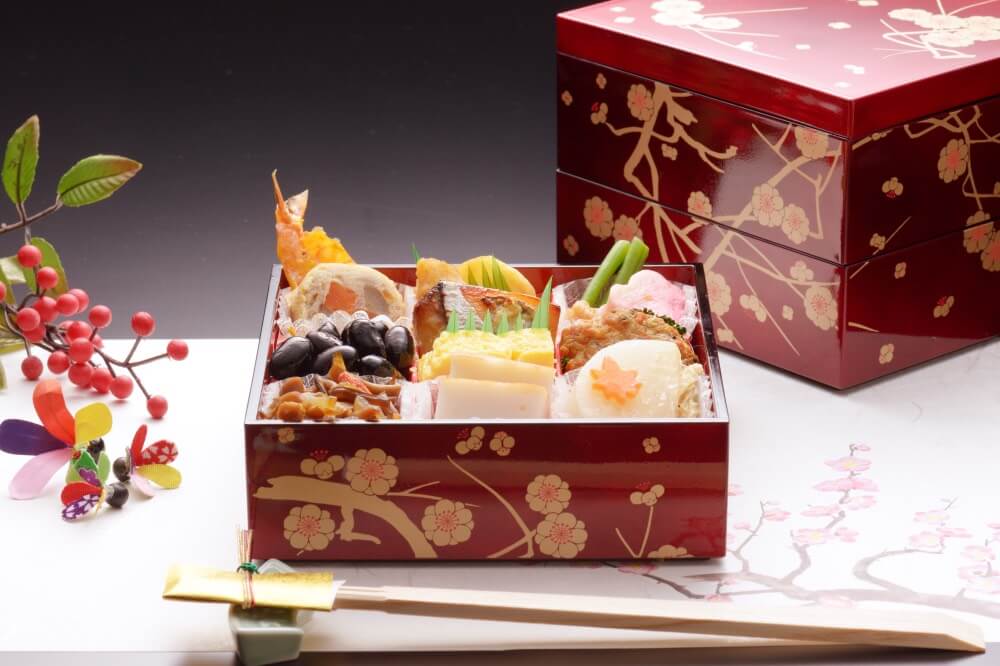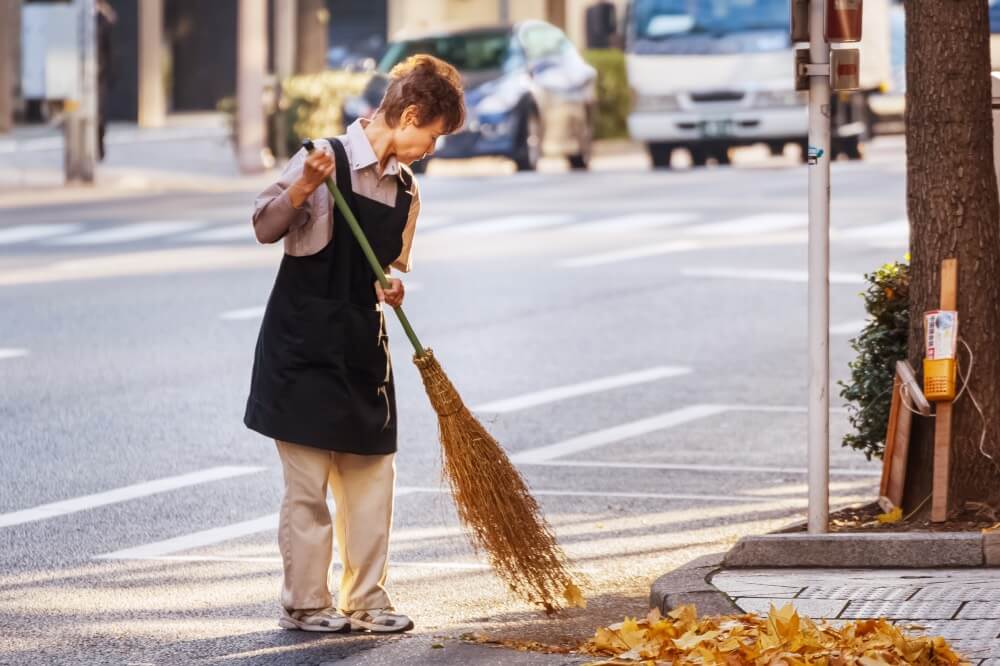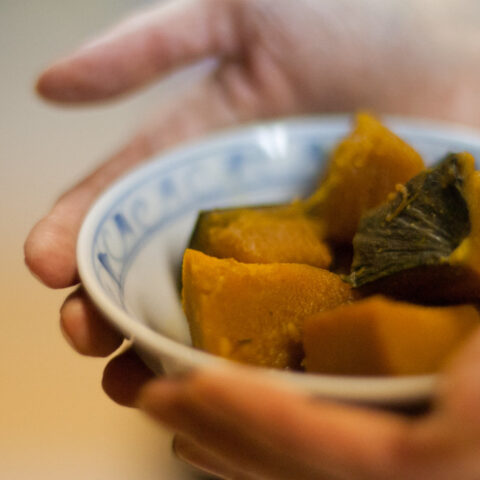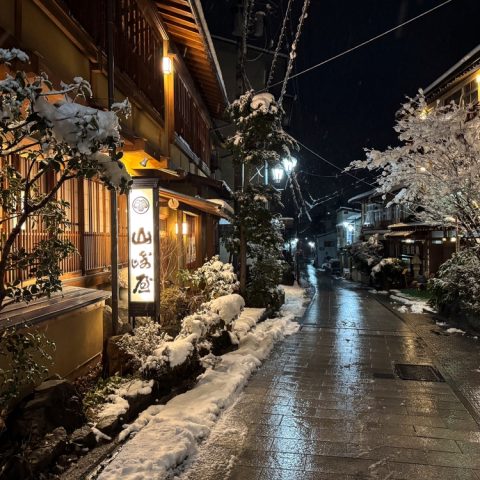
The Japanese are known for their elegant and often meticulously detailed celebrations, food, and traditions. Bringing in the new year is no different!
New Year traditions here are ancient and meant to bring health, wealth, and a renewed spirit. Preparations for the new year start off with a practice called Omisoka, where everyone lends a hand in cleaning the house and cooking traditional foods for the osechi ryori in the last few days of the old year.
While cleaning the house is a nice habit, the food is really the star of this New Year tradition. Let’s explore Osechi Ryori. These are the fanciest leftovers you will probably ever see. These elaborate obento boxes are artistic and symbolic. Dating back to the Heian Era (794-1185), the original osechi consisted of vegetables boiled in soy sauce and sugar. The idea was to have food that would keep for three days. This was done because it was seen as bad luck to use the hearth for cooking during the first three days into the new year. Now, any food made in preparation for the New Year celebrations is considered Osechi. There are even Western and Chinese versions of Osechi that are sold.

The traditional dishes are served in specially crafted obento boxes called jubako and come paired with a soup known as ozouni. The jubako is usually 3-5 boxes stacked on top of one another. Each tier holds a specific set of food varieties. There are over 20 different dishes, and these can vary based on region. The essential dishes used in Osechi are connected to the historical agriculture of Japan. The first three dishes, called iwaizakana, are black beans, anchovies, and herring roe and hold a significant place in the Osechi box.
These three dishes are placed in the top layer of the box with another group of three dishes. Black beans (kuromame) are used because of the dual meaning of mame, bean, or to work hard. Anchovies, being a form of fertilizer in the past, are included as a prayer for a bountiful harvest. Herring roe, or kazunoko, has millions of eggs in a single sac. These are used as a symbol of fertility. The second group of dishes is kuchitori, which contains kamaboko, datemaki, and kurikinton. Kamaboko is a red and white fish cake that represents the Japanese flag. The color red is meant to prevent bad spirits, and white symbolizes purity. Datemaki is an egg omelet often mixed with shrimp rolled to look like a scroll and symbolizes a wish for scholarly development. The final dish that is traditionally in the top tier is a symbol of financial prosperity. Kuri-kinton is sweetened mashed chestnuts that look like gold nuggets. The word kinton actually means gold dumpling.

The second tier in the Osechi box often consists of shrimp and renkon or lotus root. The Ebi (shrimp) and its curved shape, like that of an elderly person, represent longevity. The lotus, root with its many holes, is said to provide a clear outlook for the future. The bottom box offers nimono, dishes such as shitake mushrooms, kobumaki, Nejiri Konnyaku, and sometimes leftover items that didn’t fit in the other layers. If you missed eating the luckiest dishes in the top layer, there is hope with Kobumaki. The herring and seaweed morsel are said to bring longevity, fertility, and scholarly achievement all in one.
The dishes in Osechi Ryori are not the only ones used to bring in the new year. Ozouni is a traditional soup that is served with a single piece of mochi (rice cake) and eaten on New Year’s Day. Some soups have clear dashi broth, while others are made with miso, depending on where you are in Japan. This soup is often made with chicken, carrots, shiitake mushrooms, daikon, and tofu. Ozouni represents longevity because of the stretchiness of the mochi. Also eaten for a long life is Toshikoshi soba, the year-crossing noodle. Eating soba noodles as a New Year tradition spread across Japan’s middle class in the Edo Era. It is eaten on New Year’s Eve to symbolize crossing into the New Year. This dish consists of buckwheat noodles in a dashi broth topped with green onions. It can be topped with things such as fish cakes, nori, eggs, or spinach.

New Year celebrations just don’t seem complete without sweet treats! Eating daidai fruit, the Japanese bitter orange, during the New Year signifies a wish for children. Zenzai is a hot dessert soup made with red adzuki bean paste, sugar, and water. Zenzai is topped with toasted mochi or even mini shiratama dango.
Although the New Year’s foods were traditionally made at home for home, today, all of these dishes and more for the New Year can be purchased from large department stores, small shops, and restaurants before the New Year. Some are elaborate and very expensive for serving large groups. You could even try cooking them yourself. There are many online tutorials, and in Japan, there are many cooking classes offering up the secrets of Osechi Ryori. These dishes are shared with family and friends in Japan to bring in the New Year on a bridge of prosperity. Try some with your friends and family this coming season!
Join our Limited Edition Winter Holiday online experience to learn about Christmas And New Year traditions in Japan!




